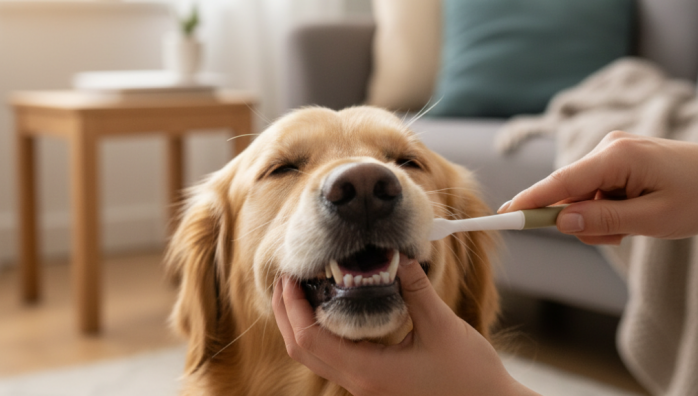Brushing Your Pet's Teeth Step-by-Step
by admin in Pet Care Basics 20 - Last Update November 16, 2025

I’ll be honest, the thought of brushing my dog\'s teeth used to fill me with dread. It felt like a monumental task, a two-person wrestling match that I was destined to lose. For years, I relied on dental chews, thinking they were enough. It wasn\'t until a vet visit for my older cat revealed the early stages of gingivitis that I realized I had to face the toothbrush. It was a wake-up call, and it forced me to find a better, calmer way. What I discovered is that with patience and the right approach, it\'s not nearly as scary as it seems.
Why it\'s so important to get started
Before we get into the \'how,\' let\'s touch on the \'why,\' because it’s the motivation that kept me going on tough days. Your vet will tell you that dental disease is incredibly common in adult dogs and cats. It\'s not just about bad breath; plaque and tartar buildup can lead to painful infections, gum disease, and even tooth loss. In serious cases, bacteria from the mouth can enter the bloodstream and affect major organs. When I learned that, I knew I couldn\'t ignore it. A few minutes of brushing a few times a week felt like a small price to pay for my pet\'s long-term health and comfort.
Gathering the right tools for the job
The first mistake I made was thinking any old brush and paste would do. It\'s crucial to get supplies made specifically for pets. Human toothpaste is a huge no-go; it contains ingredients like fluoride and xylitol which are toxic to our furry friends. Here’s what I have in my kit:
- Pet-safe Toothpaste: They come in pet-friendly flavors like poultry or beef. My dog goes crazy for the chicken flavor, which instantly made him more interested in the process.
- A Soft-Bristled Toothbrush: You can find angled brushes designed for a pet’s mouth or even multi-head brushes that clean all sides of the tooth at once. For my cat, and when my dog was first starting, I used a soft rubber finger brush. It’s less intimidating.
- Patience and High-Value Treats: This isn\'t a race. You need calm energy and plenty of positive reinforcement.
My step-by-step method for a calm brushing session
This is the gentle, slow-and-steady process that finally worked for me. The key is to break it down into tiny, manageable steps and only move on to the next one when your pet is completely comfortable.
Step 1: Get them comfortable with you handling their mouth
For a few days, I simply made a point to gently lift my pet\'s lips and touch their gums for a second or two, immediately followed by praise and a treat. No brush, no paste. Just creating a positive association with having their mouth handled.
Step 2: Introduce the toothpaste
Next, I put a tiny dab of the pet toothpaste on my finger and let them lick it off. They need to learn that this new thing is actually a tasty treat. I did this for another couple of days until they were excited to see the tube come out.
Step 3: Combine touch and taste
Now, I put the toothpaste on my finger and gently rubbed it along their teeth and gums. We were getting closer to actual brushing, but still without the scary brush. This step helps them accept the sensation of something being rubbed on their teeth.
Step 4: Introduce the toothbrush
I let them sniff and lick the toothpaste off the finger brush or toothbrush first. Then, I gently brushed just one or two of the easy-to-reach canine teeth for a few seconds. I followed up immediately with lots of praise. The goal isn\'t a perfect clean; it\'s a positive first experience.
Step 5: Build up to a full brushing
Over the next week or two, I gradually increased the number of teeth I brushed and the duration. I focus on the outside surfaces of the teeth, as that\'s where most tartar accumulates. I aim for a 45-degree angle to the gumline and use small, circular motions. It\'s now a part of our evening routine, and while it might never be their favorite activity, it\'s a calm, accepted one. Remember, this is just my experience, and it\'s always a great idea to chat with your vet if you\'re seeing signs of advanced dental issues or if your pet is in pain.










